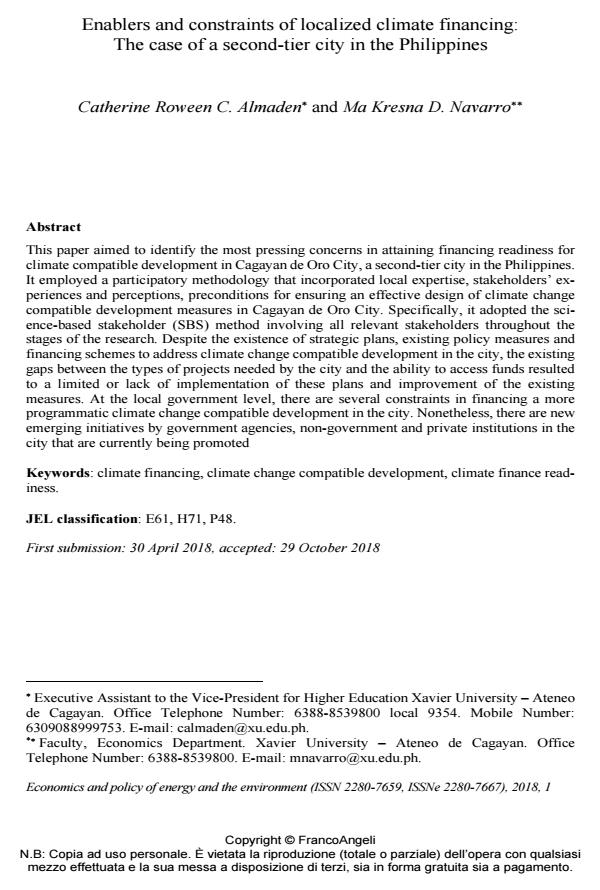Enablers and constraints of localized climate financing: The case of a second-tier city in the Philippines
Titolo Rivista ECONOMICS AND POLICY OF ENERGY AND THE ENVIRONMENT
Autori/Curatori Catherine Roween C. Almaden, Ma Kresna D. Navarro
Anno di pubblicazione 2019 Fascicolo 2018/1
Lingua Inglese Numero pagine 33 P. 191-223 Dimensione file 563 KB
DOI 10.3280/EFE2018-001009
Il DOI è il codice a barre della proprietà intellettuale: per saperne di più
clicca qui
Qui sotto puoi vedere in anteprima la prima pagina di questo articolo.
Se questo articolo ti interessa, lo puoi acquistare (e scaricare in formato pdf) seguendo le facili indicazioni per acquistare il download credit. Acquista Download Credits per scaricare questo Articolo in formato PDF

FrancoAngeli è membro della Publishers International Linking Association, Inc (PILA)associazione indipendente e non profit per facilitare (attraverso i servizi tecnologici implementati da CrossRef.org) l’accesso degli studiosi ai contenuti digitali nelle pubblicazioni professionali e scientifiche
This paper aimed to identify the most pressing concerns in attaining financing readiness for climate compatible development in Cagayan de Oro City, a second-tier city in the Philippines. It employed a participatory methodology that incorporated local expertise, stakeholders’ experiences and perceptions, preconditions for ensuring an effective design of climate change compatible development measures in Cagayan de Oro City. Specifically, it adopted the science-based stakeholder (SBS) method involving all relevant stakeholders throughout the stages of the research. Despite the existence of strategic plans, existing policy measures and financing schemes to address climate change compatible development in the city, the existing gaps between the types of projects needed by the city and the ability to access funds resulted to a limited or lack of implementation of these plans and improvement of the existing measures. At the local government level, there are several constraints in financing a more programmatic climate change compatible development in the city. Nonetheless, there are new emerging initiatives by government agencies, non-government and private institutions in the city that are currently being promoted
Parole chiave:Climate financing, climate change compatible development, climate finance readiness.
Jel codes:E61, H71, P48
Catherine Roween C. Almaden, Ma Kresna D. Navarro, Enablers and constraints of localized climate financing: The case of a second-tier city in the Philippines in "ECONOMICS AND POLICY OF ENERGY AND THE ENVIRONMENT" 1/2018, pp 191-223, DOI: 10.3280/EFE2018-001009